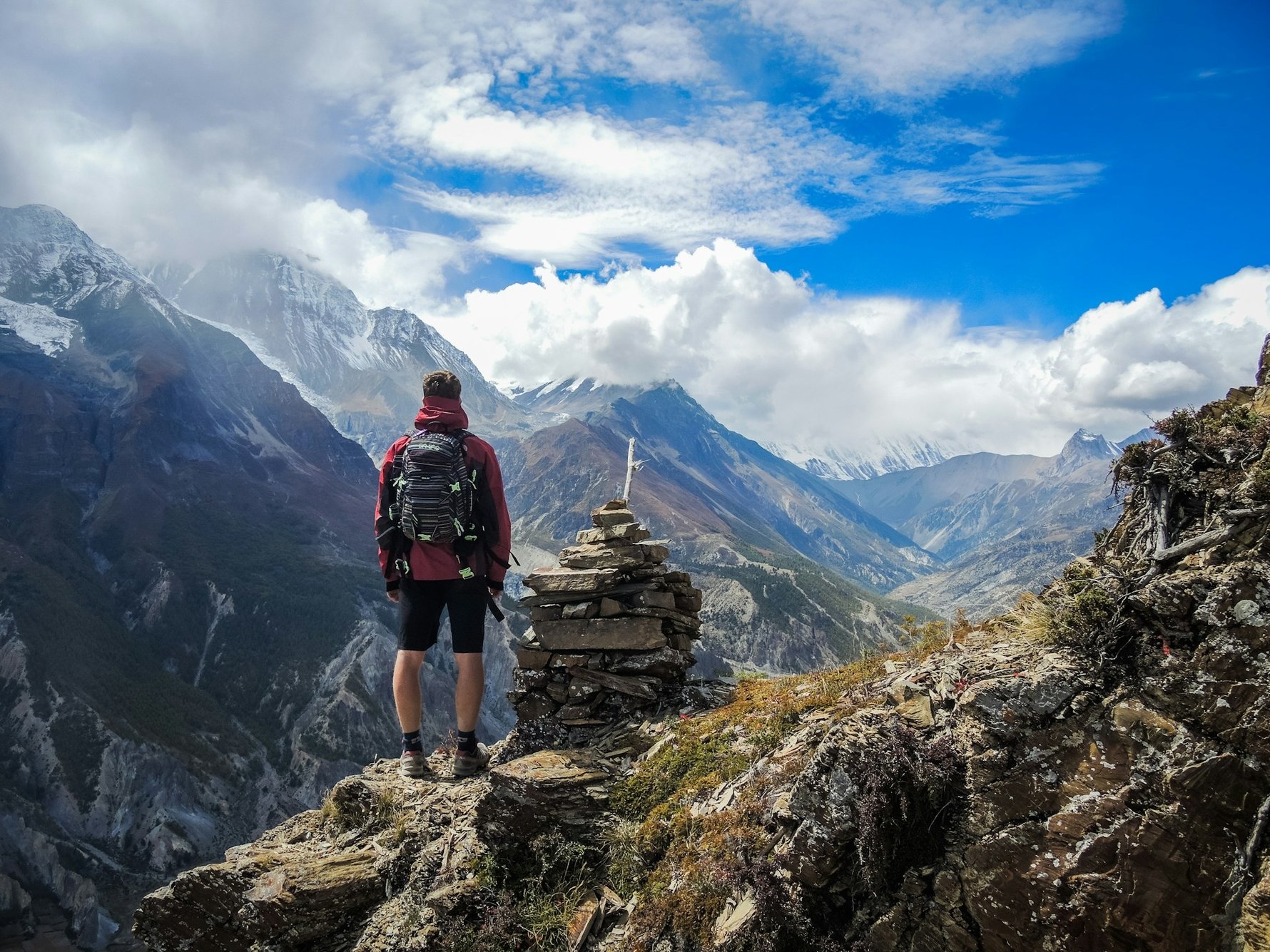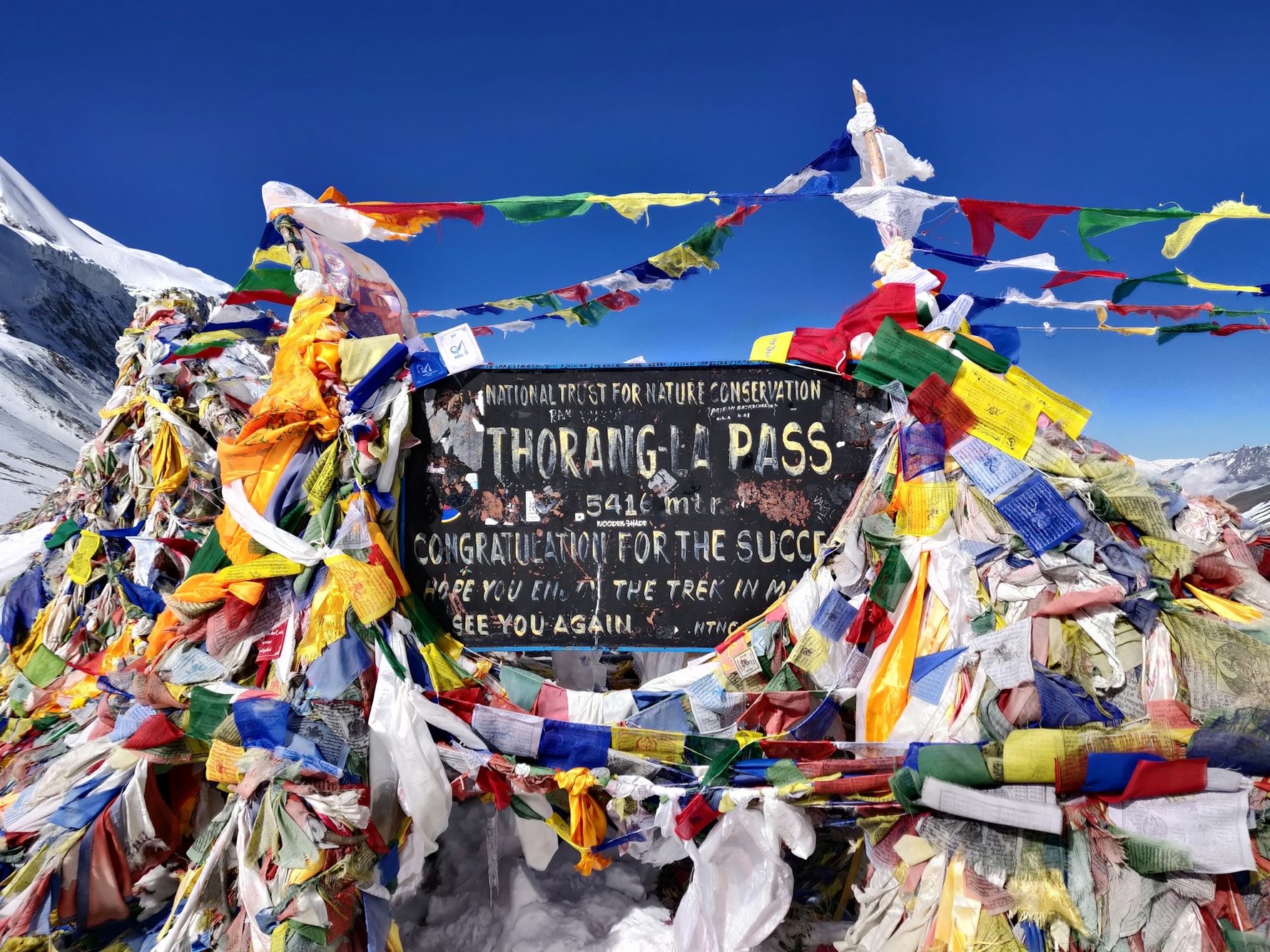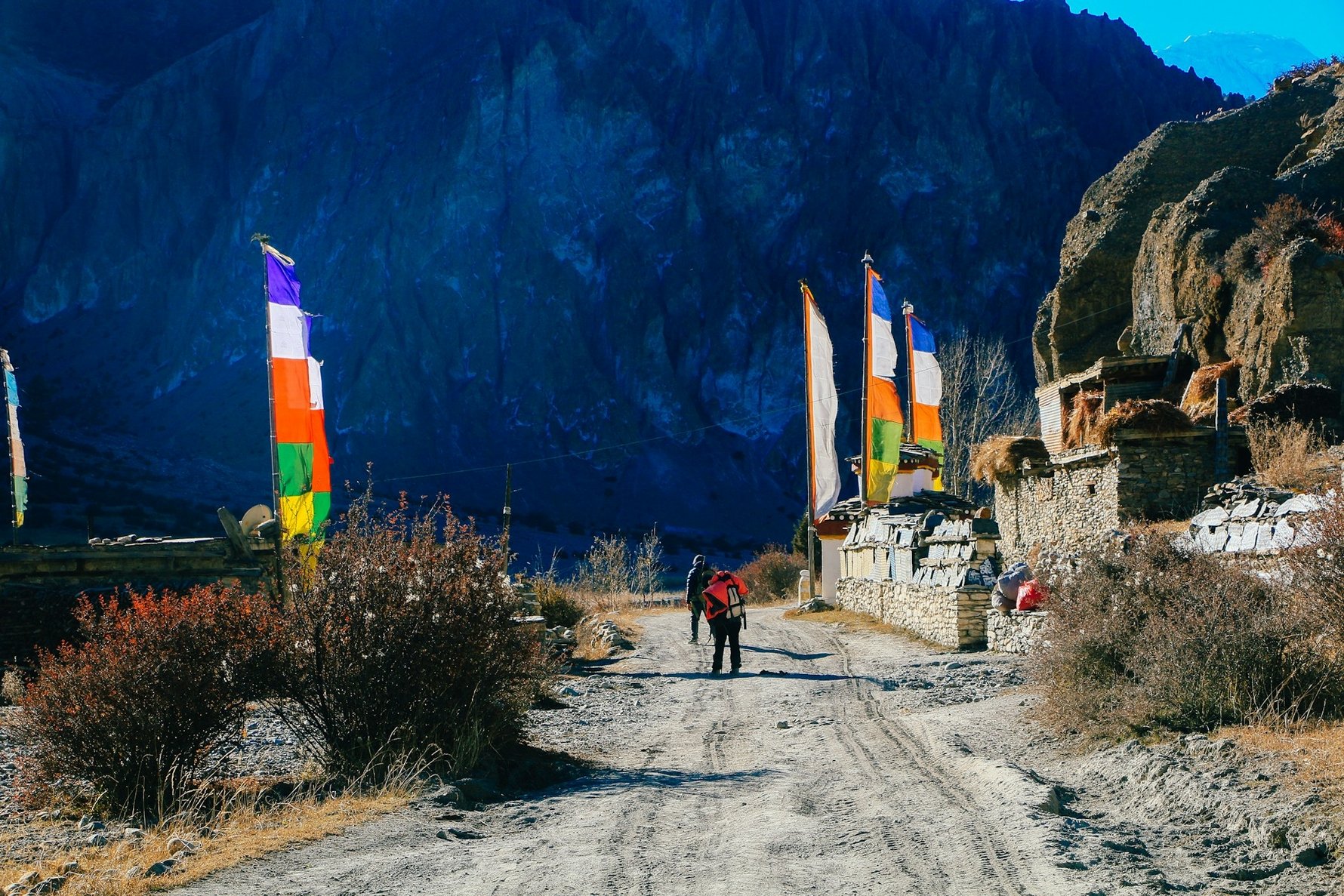
Curious about what to expect? Here’s your ultimate guide to trekking the Annapurna Circuit.
The Route Breakdown
The beauty of the Annapurna Circuit isn’t just in its landscape but in its flexibility. Traditionally, the trek starts in Besisahar and ends in Pokhara, but trailheads and endpoints can vary depending on road access and personal preference. Here's a quick overview of the route:Beginning in Besisahar
The starting point for most trekkers, this charming little town gives you a taste of rural Nepal before you ascend into the mountains. Early days on the trail are characterised by subtropical forests, terraced rice fields, and cascading waterfalls.Ascending to Manang
Once you’ve crossed the lower regions, you’ll move into alpine territory. The village of Manang, perched at 3,519 metres, is where things start to get really interesting. Besides offering stunning views of the Annapurna range, Manang is the perfect place to acclimatise while sipping tea and munching on fresh pastries (yes, there are bakeries).Tackling the Thorong La Pass
The high point – both literally and figuratively – of the trek is crossing the Thorong La Pass at a staggering 5,416 metres. It’s a gruelling climb, but the panoramic views at the top make every wheezy step worth it. Just don't forget to catch your breath –you’ll need it for the descent on the other side.Descending to Muktinath and Beyond
After Thorong La, the trail takes you downhill into the Mustang region. The holy site of Muktinath is a key highlight here, drawing pilgrims alongside trekkers. From there, you’ll pass through wind-swept landscapes that feel more like a Martian dreamscape than the lush mountains you left behind.Finishing in Pokhara
After days (or weeks) of trekking, flipping your hiking boots off and relaxing by Phewa Lake in Pokhara is the ultimate reward. Keep a cold drink handy; you’ve earned it.
Shortcut or Full Circuit?
Recent road developments mean you can skip certain parts of the trail by bus or jeep, but purists argue that nothing matches the satisfaction of completing the full circuit on foot. The choice is yours – just remember, trekking is more about the adventure than ticking off milestones.Highlights of the Trek
Here’s what’s going to make trekking the Annapurna Circuit feel like stepping into a postcard:1. Thorong La Pass
Crossing Thorong La is like standing on the roof of the world. Surrounded by snow-dusted peaks and endless horizons, this is the stuff trekking dreams are made of.
2. Tilicho Lake
Fancy a detour? Tilicho Lake, at 4,919 metres, is one of the highest lakes in the world and well worth the extra effort. Its turquoise water contrasts beautifully against the stark, rocky peaks – a sight you’ll be bragging about for years.
3. Hot Springs at Tatopani
After braving chilly winds and high altitudes, the natural hot springs in Tatopani will feel like paradise. It’s a great spot to soak sore muscles and reflect on the wild adventure you’ve just had.
4. Local Villages and Ancient Culture
From the bustling streets of Chame to the timeless beauty of Braga Monastery, the route is dotted with villages that provide insight into Nepalese culture. Expect warm hospitality, prayer flags fluttering in the wind, and plenty of opportunities to experience local customs.
What Makes It Challenging (But Totally Worth It)
Trekking the Annapurna Circuit isn’t all daisies and sunshine – although there’s plenty of both. Here are a few challenges to prepare for:1. Altitude Sickness
The higher you go, the thinner the air gets. Acclimatisation is key, which is why villages like Manang make ideal pitstops. Stay hydrated, go slow, and listen to your body (pro tip: headaches are not your friend).
2. Unpredictable Weather
Days can swing wildly from sunny and warm to snow-covered chills. Always pack layers, because mountain weather is as moody as your youngest sibling on a bad day.
3. Physical Endurance
Sure, you don’t need to be a seasoned yogi to conquer the circuit, but some basic fitness is non-negotiable. Train beforehand, ideally with long hikes and leg-strengthening exercises. Your knees will thank you later.
4. The Thorong La Climb
Climbing to 5,416 metres is no walk in the park. The pass is steep, demanding, and at times feels endless. But reaching the summit? Oh, the elation!

Cultural Experiences Along the Way
What sets the Annapurna Circuit apart isn’t just the landscape but the cultural richness woven through every aspect of the trek. Here’s a glimpse:
The Gurung and Thakali People
These communities are the lifeblood of the region, known for their hospitality and resilience. Trekkers often talk about bonding over shared meals and stories, adding a personal touch to the adventure.
Buddhist Monasteries
Scattered along the trail are ancient monasteries rich in tradition. Each spinning prayer wheel and colourful mural tells its own story, adding depth to your trek.
Local Cuisine
Dal bhat power – 24-hour! This traditional Nepali dish, consisting of lentils, rice, and curry, is more than just sustenance; it’s fuel for the most grueling treks. And don’t miss Tibetan-style steamed dumplings, also known as momos.
Essential Tips for Trekkers
Whether you’re an experienced mountaineer or a total trekking newbie, these practical tips will help you make the most of yourAnnapurna Circuit adventure:
Time It Right
The best time to trek is October-November or March-April, when the weather is mild and the views are crystal-clear.
Pack Smart
Lightweight layers, a good-quality sleeping bag, and sturdy hiking boots are non-negotiable. Bonus points if you carry some energy bars for the mid-trail munchies.
Go with a Guide or Trek Solo?
While trekking solo is possible, hiring a local guide or porter adds an extra layer of safety and cultural insight. Plus, you’re helping support the local economy.
Bring Permits
You’ll need two key permits – the Annapurna Conservation Area Project (ACAP) permit and the TIMS card. Apply in Kathmandu or Pokhara before you set off.
Hydrate, Hydrate, Hydrate!
Dehydration is sneaky and exacerbates altitude sickness. Keep a water bottle handy – and consider purifying tablets because streams are plentiful but not potable.
Final Thoughts
Trekking the Annapurna Circuit is more than just an adventure; it’s a lifeline to nature, history, and culture. Whether you’re conquering the Thorong La Pass, sharing laughs with locals in a teahouse, or standing in awe of the Annapurna massif at sunrise, this trek is all about creating stories that last a lifetime.Back those bags, lace up those boots, and grab that permit. The trail’s calling, and it’s one call you definitely want to answer.


Comments